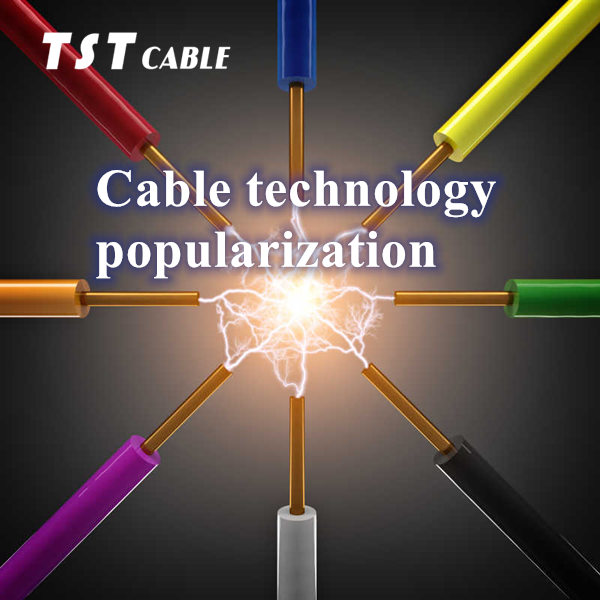Read the logo to identify the network cable CAT5e/CAT6e STP/UTP AWG/BWG/SWG/IEC and what do they mean? Dry weak procurement to buy the wrong network cable in the end how outrageous?
Building the global Internet, network cable is essential. Whether it is a network center, office building, or home wiring and so on, it has its figure.
However, without knowing the type of network cable, there is often an embarrassing situation where the purchaser buys the wrong network cable.
TSTCABLES to give you a popular network cable cable basics, at present, we have access to the main three types of network cable: twisted pair, coaxial cable, fiber optic.
This information will be identified on the network cable, which is the same as the label on the clothes, with the most intuitive way to convey to the user.
As shown in the figure below, different letters represent different standards.
So today TSTCABLES will talk about how to recognize the quality of network cable and its category, so that you can make a more appropriate choice.

1. Types of network cable
Recognized network cable has nine categories, different types of cable represents different transmission frequency and rate, which is the key to determine the speed of the network.
Class I cable: the highest frequency bandwidth is 750kHZ, only applicable to the earliest telephone cables, only two cores, mainly used to transmit voice.
Category 2 cable: The maximum transmission frequency is 1MHz, the maximum transmission rate is 4Mbps (Megabits per second), which can be used for voice and data transmission.
Category 3 cable: Maximum transmission frequency is 16MHz, maximum transmission rate is 10Mbps, can only be used in 10M network.
Category 4 cable: Maximum transmission frequency is 20MHz, maximum transmission rate is 16Mbps, maximum network segment length is 100m.
Category 5 cable: increased winding density and insulation materials, maximum transmission frequency is 100MHz, maximum transmission rate can reach 100Mbps, mainly used in 100Mbps and 10Mbps networks, which has been replaced by Ultra Category 5 cable.
Ultra Category 5 cable: Reduced interference and attenuation on Category 5 cable, maximum transmission rate of 1000Mbps, commonly used in 100Gbps and 1Gbps networks.
Category 6 cable: Generally refers to unshielded cable, Category 6 cable is far superior to Category 5 cable in transmission rate, it can reach up to 1Gbps, generally used in Gigabit networks.
Super Category 6 cable: Super Category 6 cable, also known as 6A, has been greatly enhanced and improved on the basis of Category 6 cable.
Category 7 cable: Category 7 cable is the latest twisted-pair cable, basically shielded twisted-pair cable, the highest frequency of up to 500MHz, the highest transmission rate of up to 10Gbps, mainly used for 10Gbps network applications.
The above seven categories of wire, a class of wire to Category 5 wire have been eliminated, Super 5, Category 6, Super 6 wire is now commonly used.
How to confirm on the cable? Find the number after “CAT” to know.
Category 5 cable is identified as “CAT5”, Ultra Category 5 cable is “CAT5e”, Category 6 cable is “CAT6”, and Ultra Category 6 cable is “CAT6e”. CAT6e”, some network cables will use the full name “CATEGORY” (category) .
2. Shielded/unshielded cables
When introducing the types of network cable, the words “shielded” and “unshielded” are mentioned again and again.
Twisted pair cables are further divided into shielded twisted pair (STP) and unshielded twisted pair (UTP).
It is now known that the letters corresponding to shielded twisted pair and unshielded twisted pair are STP and UTP, respectively, and only need to be found on the cable.
As shown in the following figure: U/UTP, represented by the unshielded twisted pair.
Shielded twisted pair (STP), not only requires a ground wire and more maintenance, but is also relatively expensive.
Unshielded twisted pair (UTP), on the other hand, does not require a ground wire, does not require more maintenance, and is relatively inexpensive and cost-effective.
3. Common Wire Gauges
Common wire gauge standards are American Wire Gauge (AWG), Birmingham Wire Gauge (BWG), British Standard Wire Gauge (SWG), and International Standard (IEC).
The “gauge” represents the thickness of the copper wire diameter within the wire. The number in front of the “AWG” found on the wire indicates the number of holes the wire passes through before it reaches its final diameter.
The larger the number, the more holes the wire passes through and the smaller the diameter; in other words, the smaller the number, the thicker the wire.
In other words, the smaller the number, the thicker the wire. As shown in the figure below, the “26AWG” wire is thicker than the “30AWG” wire, but thinner than the “23AWG” wire.
I believe that now, we have a certain understanding of the network cable “type, shielded/unshielded, wire gauge”, but also know how to distinguish between the products.
Finally, TSTCABLES reminds you that there is a point that is easy to ignore, when buying cables, you should pay attention to check the qualification of the logo, check whether the logo on the cable is clearly visible, so that you can choose a reliable cable product like TSTCABLES.
Also available in:
English


